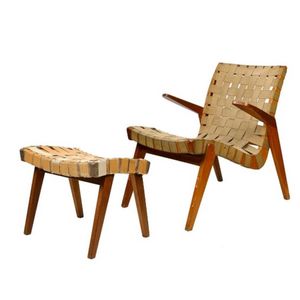Victorian Oak Glastonbury Chair with Carved Details
You must be a subscriber, and be logged in to view price and dealer details.
Subscribe Now to view actual auction price for this item
When you subscribe, you have the option of setting the currency in which to display prices to $Au, $US, $NZ or Stg.
- Oak - Native to Europe and England, oak has been used for joinery, furniture and building since the beginning of the medieval civilisation. It is a pale yellow in colour when freshly cut and darkens with age to a mid brown colour.
Oak as a furniture timber was superceded by walnut in the 17th century, and in the 18th century by mahogany,
Semi-fossilised bog oak is black in colour, and is found in peat bogs where the trees have fallen and been preserved from decay by the bog. It is used for jewellery and small carved trinkets.
Pollard oak is taken from an oak that has been regularly pollarded, that is the upper branches have been removed at the top of the trunk, result that new branches would appear, and over time the top would become ball-like. . When harvested and sawn, the timber displays a continuous surface of knotty circles. The timber was scarce and expensive and was used in more expensive pieces of furniture in the Regency and Victorian periods. - Glastonbury Chair - A Glastonbury chair is a term applied to a type of English folding chair where, from a side view, the legs form an "X". They were supposedly named after a design of a similar chair by the Abbot of Glastonbury in the16th century.
Contrast this with a Savonarola or "X" chair, traditionally made in Spain and Italy, where the 'X" of the legs is visible from the front or rear of the chair. - Victorian Period - The Victorian period of furniture and decorative arts design covers the reign of Queen Victoria from 1837 to 1901. There was not one dominant style of furniture in the Victorian period. Designers used and modified many historical styles such as Gothic, Tudor, Elizabethan, English Rococo, Neoclassical and others, although use of some styles, such as English Rococo and Gothic tended to dominate the furniture manufacture of the period.
The Victorian period was preceded by the Regency and William IV periods, and followed by the Edwardian period, named for Edward VII (1841 ? 1910) who was King of the United Kingdom and the British Dominions and Emperor of India for the brief period from 1901 until his death in 1910.
This item has been included into following indexes:
- chairs, singles / pairs / threes, style or period
- chairs, singles / pairs / threes, timber - oak 497
Visually similar items

A Victorian oak Glastonbury type chair, circa 1880, 91 cm high

Rustic folding Sling chair, tree branch arms and a burlap stretched seat. Provenance: The Estate of Ray Hughes

Borge Morgensen. 'Hunting' chair. Manufactured by Fredericia Stolefabrik. Leather and oak. Denmark c1960s. 68 cm high, 70 cm wide, 85 cm deep

Douglas Snelling (1916-1985), Saran chair and stool, c. 1957 manufactured by functional Products Pty Ltd, St Peers, Syd, Australia, chair with khaki webbing, stool with cream plastic webbing (2) (A/F). Height 74 cm, width 63 cm, depth 67 cm. Literature: Gr
